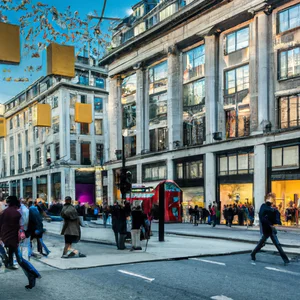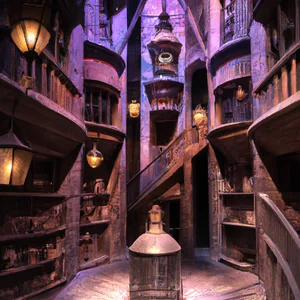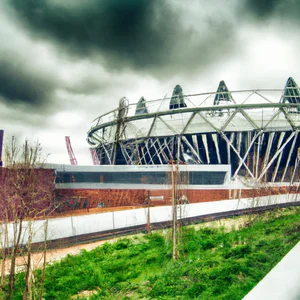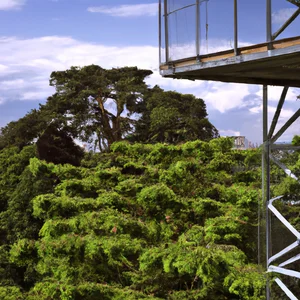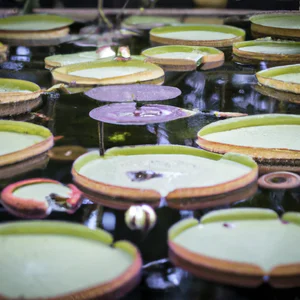Book your experience
Astronomy Photographer of the Year: The exhibition of the best astronomical photographs at the Royal Observatory
Do you know that exhibition held at the Royal Observatory? The one called “Astronomy Photographer of the Year”? It’s really cool! Every year, a flood of photographers – both professionals and amateurs, if we’re being honest – embark on this sort of competition to capture the best of the cosmos. It’s as if each image were a poem written with starlight.
Over the years, I’ve seen some jaw-dropping photos. That is, we are talking about shots of distant galaxies, crazy-colored nebulae and maybe even some planets in our solar system. It’s like getting a glimpse into a world we usually can’t even imagine, huh? I mean, who hasn’t ever wondered what it would be like to see Saturn with your own eyes, or so?
I think one of the most incredible things about this exhibition is the variety. There are images that almost look like paintings, with details so clear that it makes you want to reach out and touch them. And then, there are those photos taken in really difficult conditions, like in the middle of a storm or somewhere remote in the desert. I’m not sure, but I think these photographers have the courage of a lion!
And, I mean, the place itself is a marvel. The Royal Observatory is already a place with an incredible history in itself, but when you go there to see these works, it almost seems as if time stands still. I once went there with a friend, and I remember we were mesmerized by a photo of a supernova. I don’t know if we were more struck by the image or by the fact that someone had had the idea of immortalizing such a rare event.
In summary, if you are passionate about space or simply want to take a different tour than usual, this exhibition is a real must. I may not win the award for best astronomical photographer, but I bet the experience of seeing these wonders in person is something I won’t easily forget!
Discover the wonders of the night sky
During one of my nights in Greenwich, I found myself gazing at the starry sky, surrounded by stories of navigators and astronomers. The cool evening air was dotted with thousands of stars, and I realized how mesmerizing the night sky can be. That’s why the Astronomy Photographer of the Year exhibition at the Royal Observatory is an experience that every astronomy lover should have.
A visual journey among the stars
This annual exhibition celebrates the best astronomical photography, allowing visitors to admire the vastness of the universe through the lens of talented photographers. From colorful nebulae to star clusters, each work tells a unique story, a moment frozen in time that invites us to reflect on our position in the universe. The Royal Observatory, with its historic sundial and famous telescope, provides a perfect backdrop for this visual celebration.
Practical information
The exhibition is usually held between September and January, and tickets can be purchased online at the Royal Observatory’s official website. Be sure to book in advance, as the event attracts visitors from all over the world. If you want a more intimate experience, consider visiting during the week, when crowds are more manageable.
An insider tip
If you want to experience a magical moment, don’t forget to visit the planetarium at the Royal Observatory. Here, you can immerse yourself in shows that take you on a journey through the constellations, paying homage not only to photographic shots, but also to the historical tradition of sky-gazing.
Cultural and historical impact
The Royal Observatory in Greenwich is a symbol of science and navigation, and is home to the meridian line that divides the Eastern and Western Hemispheres. This exhibition not only celebrates the art of astronomical photography, but also commemorates the historic discoveries that changed the way we see the world and the universe.
Sustainability in astrophotography
Considering the growing interest in sustainability, it is important to note that many participating photographers use eco-friendly techniques to reduce their environmental impact. They can use energy-efficient equipment or practice nighttime observations in places away from artificial light, helping to preserve the beauty of the night sky.
An activity not to be missed
After visiting the exhibition, I recommend you take part in one of the observation evenings organized by the Royal Observatory. Here, you’ll be able to use high-quality telescopes to see planets and stars up close, making your visit a truly immersive experience.
Myths and misconceptions
Astronomy photography is often thought to require expensive and complex equipment. In fact, many emerging photographers start with simple setups and smartphones, proving that the art of sky capturing is accessible to all.
A final reflection
The wonder of the night sky invites us to consider how vast our universe is and our place in it. Have you ever wondered what lies beyond the stars we observe? Next time you look up, remember that every bright spot has a story to tell.
Award-winning works by emerging photographers
An enlightening discovery under the starry sky
I remember the first time I stepped into an astrophotography exhibit, surrounded by breathtaking images of distant galaxies and colorful nebulae. One shot in particular, winner of a prestigious award, caught my eye: an image of a starry field above a mountain landscape, where the harmony between nature and the universe seemed to tell a story of profound connection. That evening, immersed in timeless beauty, it became clear to me that these works are not just photographs; they are doors to unknown worlds.
Practical information on the exhibition
Currently, the exhibition of award-winning works by emerging photographers is held at the Greenwich Science Museum, an iconic place for astronomy enthusiasts. The event is open every weekend, with entries starting from £10. It is advisable to book online to avoid long waits, and for those wanting a more in-depth experience, specialized guided tours are available. For more details, you can consult the museum’s official website here.
An insider tip
If you want a unique experience, try visiting the exhibition during the early hours of the morning. The calm and serenity of the place, combined with the soft light of dawn that filters through the windows, offer a magical atmosphere that makes the contemplation of the works even more intense.
The cultural impact of astrophotography
Astrophotography has deep roots in human culture, representing not only a way to capture the beauty of the night sky, but also a means to explore humanity’s existential questions. The works of emerging photographers not only challenge the technical limits of photography, but also reflect the new sensibilities and environmental challenges of our time, creating a dialogue between art and science.
Sustainability and responsible tourism
In recent years, many emerging photographers have embraced sustainable astrophotography practices, using techniques that minimize light pollution and respect the environment. This approach not only preserves the beauty of the night sky, but also encourages the public to reflect on the importance of protecting our skies.
A journey into the wonderful
Imagine gazing up at the night sky as an expert photographer shares his techniques and stories behind the images on display. During the exhibition, don’t miss the opportunity to participate in a hands-on astrophotography workshop, where you can learn how to capture the beauty of the starry sky with your smartphone.
Myths and misconceptions
A common misconception is that astrophotography is only accessible to professionals with expensive equipment. In reality, many emerging photographers use simple techniques and tools available to everyone. With a little patience and creativity, anyone can explore this fascinating world.
A final reflection
The next time you look at the night sky, ask yourself: what stories are hidden among the stars? The beauty of the works on display is not only an invitation to contemplate the sky, but also a challenge to discover our connection with the universe. And you, are you ready to immortalize your vision of the sky?
A journey through time: the history of the observatory
A personal memory
The first time I stepped into Greenwich Observatory, the sky was a deep blue, dotted with twinkling stars. I remember the emotion that pervaded me as I crossed the threshold of that historic monument, a place that marked the course of astronomical science. It wasn’t just the imposing architecture or ancient astronomical machines that caught my eye, but the knowledge that I was walking in the footsteps of some of history’s greatest thinkers, such as Sir Isaac Newton and Edmond Halley.
The History of Greenwich
Founded in 1675, Greenwich Observatory was the first royal observatory, designed to improve maritime navigation and establish the zero meridian. This place is not just a research center; it is a symbol of human curiosity and the desire to understand our place in the universe. Its historical importance is such that it has been included in the UNESCO World Heritage List. Every year, thousands of visitors come here to discover not only the science, but also the magic of a time when the stars were the only guides for navigators.
An insider tip
If you want a truly unique experience, visit the observatory during public viewing evenings. On these occasions, local astronomers share not only their knowledge, but also fascinating stories related to ongoing celestial events. I recommend bringing a small portable telescope or binoculars with you; you might be surprised by how much detail you can discover in the night sky!
The cultural impact
The history of the Greenwich Observatory has influenced not only science, but also popular culture. His image is often used in films and books, symbolizing the search for knowledge and mystery. Furthermore, it has inspired artists and writers, who have found an endless source of inspiration in the stars.
Sustainability and responsibility
In recent years, the observatory has embraced sustainable tourism practices, encouraging visitors to respect the environment. During observation evenings, ample space is given to education regarding light pollution and its influence on the ecosystem. Participating in these activities not only enriches your experience, but also helps preserve the beauty of the night sky for future generations.
An activity worth trying
Don’t miss the opportunity to participate in one of the astrophotography workshops offered by the observatory. These hands-on sessions will allow you to learn advanced photography techniques as you capture the beauty of the night sky. It’s a perfect way to combine passion and learning, making your visit unforgettable.
Myths to dispel
A common misconception is that the Greenwich Observatory is only for experienced astronomers. In fact, it is open to everyone, from beginners to enthusiasts. Access is easy and there are many resources available to help you understand the fundamental concepts of astronomy.
Final reflection
The story of the Greenwich Observatory is an invitation to reflect on how small our place is in the universe. Have you ever wondered what the night sky might reveal about your life and aspirations? Visit this extraordinary place and be inspired by the stars, which have told stories of exploration and discovery for centuries.
Photographic techniques to admire and learn
During one of my evenings spent under the starry sky of a remote observatory, I had the opportunity to meet an astrophotographer who captured the Milky Way in all its splendor. With his equipment, he shared with me the techniques he used to immortalize those celestial wonders. It was a moment that changed the way I saw the night sky and made me realize how fascinating the union between science and art is.
Tools and techniques for astrophotography
Astrophotography is an art in its own right that requires not only specific equipment, such as wide-angle lenses and stable tripods, but also a deep understanding of exposure and post-production techniques. The most common techniques include:
- Long exposure: long exposures that allow you to capture starlight.
- Stacking: Combine multiple images to reduce noise and increase details.
- Light painting: illuminate the foreground during the exposure to create suggestive effects.
If you want to delve deeper into these techniques, many local observatories and photographers offer workshops and hands-on courses, such as those run by the Greenwich Observatory. These events will not only provide you with practical skills, but will also allow you to discover the fascination of the night sky in a community setting.
An insider tip
A little-known trick I’ve learned is the importance of using shoot planning apps. Tools like PhotoPills or Star Walk can help you predict the positions of stars and planets, thus optimizing your chances of taking stunning photos. These tools are a valuable resource for every astrophotographer, from beginner to expert.
Cultural and historical impact
Astrophotography is not only an art form, but also has a profound impact on culture and science. Through images of the night sky, we can explore our connection to the universe and better understand our place in it. Photographs taken by astronomers and enthusiasts have contributed to scientific discoveries and inspired generations to look beyond our planet.
Sustainable tourism practices
It is essential to remember the importance of sustainability in astrophotography. Artificial light can ruin viewing conditions, so it is essential to choose remote locations and comply with local regulations to reduce light pollution. Participating in astrophotography events that promote eco-friendly practices is one way to help preserve our night sky for future generations.
An activity worth trying
If you want to immerse yourself in astrophotography, consider attending one of the many observing nights held at the Greenwich Observatory. These events not only offer the opportunity to photograph the sky, but also to interact with industry experts and enthusiasts.
Myths and misconceptions
A common misconception is that astrophotography is only accessible to those who own expensive equipment. In fact, with some basic techniques and a little creativity, even with a simple camera or smartphone you can capture stunning images of the night sky.
Final reflection
Looking at the starry sky, we realize how vast and mysterious the universe is. What stories do the stars above us tell? And how can we, through the art of photography, share these wonders with the world? Let’s reflect on how we approach photography can influence our understanding and appreciation of the beauty of the night sky.
The importance of sustainability in astrophotography
When I visited an observatory in a remote mountain location, I remember admiring the night sky in all its magnificence. The stars shone like diamonds on black velvet, and as I took photographs, I realized how crucial it was to preserve this spectacle for future generations. Astrophotography, while fascinating, must go hand in hand with sustainability.
The beauty of a preserved universe
The importance of sustainability in astrophotography cannot be understated. Artificial city lights not only pollute the sky, but also compromise the quality of images that photographers can capture. According to the Light Pollution Map, many areas of the world are now completely covered by a veil of light pollution. This has pushed many communities and photographers to promote responsible shooting practices and seek out remote locations where the light from the sky can shine in all its splendor.
An insider tip
A little-known trick for astrophotography enthusiasts is to schedule shots during new moon nights. Not only will the sky be darker, but observation sites will also be less crowded. Additionally, you may consider carrying a red flashlight; It not only reduces light pollution, but also allows you to see better while preparing your equipment.
A profound cultural impact
Astrophotography has deep cultural roots in many civilizations, which have always looked to the stars to orient themselves and tell stories. Ancient cultures, such as the Mayans and Greeks, built observatories and created star maps. Today, the art of astrophotography not only celebrates the beauty of the cosmos, but also serves as a reminder of the responsibility to preserve the environment.
Sustainable tourism practices
Many astrophotography organizations are promoting sustainable practices, such as using energy-efficient equipment and choosing locations that minimize environmental impact. For example, in some areas, amateur astronomers are partnering with national parks to organize night-time observing events, while ensuring that these experiences do not harm local ecosystems.
An invitation to observation
A must-do activity for anyone looking to immerse themselves in astrophotography is to attend an overnight astrophotography workshop in a national park. Here, you will not only have the chance to take stunning photographs, but also learn from industry experts on how to use sustainable techniques.
Dispelling the myths
A common misconception is that night sky photography requires expensive equipment. In fact, with a good smartphone and a simple night photography app, you can start capturing the beauty of the sky. The key is to know the right techniques and have a little patience.
A final reflection
Next time you look up at the sky, ask yourself: How can I help preserve this wonder? Astrophotography is not just an art, but a way to connect with the universe and, at the same time, a call to action to protect our environment. In a world where everything seems ephemeral, the stars remind us that there are things worth protecting.
Special events: meetings with the winners
An experience that illuminates the heart
I vividly remember the evening I attended a special event dedicated to the stars: the deep blue sky dotted with brilliant stars, while astronomy and photography enthusiasts gathered around me. It was on that occasion that I had the privilege of meeting one of the winners of the astrophotography competition, who shared his story and his art. His words resonated like a melody, telling of endless nights spent capturing the beauty of the cosmos. This event not only enriched my knowledge but also forged an unbreakable bond between me and the wonderful world of astrophotography.
Practical information
If you are interested in participating in similar events, always check the official website of the local observatory or astrophotography associations, where meetings with the winners of the competitions are announced. For example, the famous Royal Observatory in Greenwich regularly organizes events that allow visitors to interact with photographers and hear the stories behind their works. You can find updated information on their web page and social media.
An insider tip
Here’s a little-known tip: At these events, don’t just ask questions about the technicalities of photography. Ask photographers to tell the most exciting moments they experienced during their photo sessions. Often, the most fascinating stories arise from unexpected events or special weather conditions, and these experiences can offer you a new perspective on the art of astrophotography.
Cultural and historical impact
Astrophotography is not just a hobby; it is a means to connect with culture and history. Events celebrating this art form often draw attention to science and technological innovation. Through the winners’ works, we can explore how our relationship with the sky has evolved over time, from the stellar navigation of ancient sailors to modern space exploration.
Sustainability in astrophotography
When you attend these events, it’s important to think about the environmental impact. Many emerging photographers engage in sustainable tourism practices, seeking to reduce light pollution and protect local ecosystems. Choose events that promote environmental awareness and encourage responsible practices.
A sky to explore
Imagine finding yourself under a starry sky, surrounded by enthusiasts who share your same wonder. Every meeting with a winner of an astrophotography competition is an opportunity to discover not only new techniques, but also to immerse yourself in a world of emotions and stories. I recommend you book a practical workshop, where you can personally experience the thrill of capturing the night sky.
Myths to dispel
A common misconception is that astrophotography is only accessible to those who own expensive equipment. In fact, many winners start with basic equipment and develop their skills over time. The important thing is passion and the desire to learn.
A final reflection
After attending an event like this, you’ll find yourself looking at the night sky with new eyes. What story would you like to tell through your photography? Maybe it’s time to look up and discover the cosmos around you, a universe of possibilities just waiting to be immortalized.
A local experience: astronomical observations in Greenwich
A memory under the stars
I still remember the evening when I found myself in Greenwich, with my nose in the air, immersed in the magic of the night sky. It was an astronomical observing event organized by the Royal Observatory, and as the telescope pointed towards Saturn, the guide told stories of explorers and scientists who had charted the stars centuries ago. The sight, with Saturn’s rings shining like diamonds, left me speechless. This is just a taste of what awaits you in Greenwich, where the night sky is a stage for cosmic wonders.
Practical information
The Royal Observatory at Greenwich is open to the public for astronomical observing events throughout the year. Check the site official Royal Observatory Greenwich for updates on special events and bookings. Viewing events are generally held on Friday and Saturday evenings, and there is an entrance fee, so it is advisable to book in advance.
An insider tip
A little secret that only locals know is to bring a blanket and a thermos of hot tea. Evenings can be cool, and having a comfortable corner to sit while gazing at the sky can make the experience even more memorable. Also, try to arrive a little early to enjoy the panoramic sunset over the River Thames.
Cultural and historical impact
Greenwich is not just a place of observation; it is a crossroads of history and culture. The Greenwich Meridian marks the reference point from which time zones around the world are measured. The observatory has been a center of astronomical research since 1675, contributing to fundamental discoveries that have shaped our understanding of the universe.
Sustainability in astrophotography
As you marvel at the stars, it’s important to consider sustainable tourism practices. Participating in astronomical observing events can contribute to the conservation of natural spaces and promote awareness of the importance of protecting our environment. Be sure to follow the organizers’ instructions to minimize environmental impact.
Lovely atmosphere
Imagine standing on Greenwich Hill, surrounded by astronomy enthusiasts, as the sky darkens and the stars begin to twinkle. The scent of fresh grass, the sound of the wind in the trees and the murmur of enthusiastic conversations create a unique atmosphere, where science and wonder meet.
Activities to try
In addition to stargazing, consider taking one of the Observatory’s nighttime guided tours, where experts will guide you through the history and science of astronomy. You could also try taking photos of the night sky with your smartphone, following the advice provided by the photographers present at the event.
Myths to dispel
A common misconception is that astronomical observations are reserved only for experts. In fact, events like the ones in Greenwich are open to everyone, from beginners to enthusiasts. You don’t need to be an astronomer to enjoy the beauty of the sky; you just need to have curiosity and a desire to learn.
A final reflection
After an evening of stargazing, you’ll find yourself reflecting on how vast and mysterious the universe is. What stories could the stars shining above us tell? We invite you to explore this wonder and discover your connection to the sky, because every observation is an opportunity to discover something new about yourself and the world around you.
Curiosities about the constellations not to be missed
A close encounter with the stars
I remember the moment, as a child, when I looked up at the night sky for the first time and saw a constellation drawn so vividly that it seemed to tell stories of heroes and gods. That magical experience is what the “Astronomy Photographer of the Year” exhibition wishes to recreate for its visitors, bringing to light the fascinating narratives behind the constellations. Each image exhibited is not just a simple shot, but a window onto a universe of myths, legends and ancient knowledge.
A journey through myths and legends
During your visit to the exhibition, you will have the opportunity to discover surprising curiosities about the constellations. For example, did you know that the constellation Orion, often called the “Hunter”, is represented in many cultures as a warrior? Or that the Pleiades, also known as the “Seven Sisters,” were considered an important planting sign for farmers of antiquity? These stories not only enrich our understanding of the sky, but also connect us with past generations who, like us, looked at the stars and found inspiration in their beauty.
Discover the night sky with a local twist
If you want some unconventional advice, I suggest you attend one of the astronomical observing evenings organized by the Royal Observatory in Greenwich. Here, you will not only have access to high-quality telescopes, but you will be guided by expert astronomers who will share fascinating anecdotes about constellations and celestial phenomena. This experience will allow you to see the same stars that inspired the photographers on display, offering you a direct and personal connection to the cosmos.
The cultural importance of the constellations
Constellations have always played a fundamental role in cultures around the world. They have been used to navigate, to tell stories and even to understand the changing of the seasons. The exhibition not only celebrates the beauty of these star configurations, but also pays homage to their historical and cultural importance. Through the art of astrophotography, we can appreciate the legacy these stories have left us.
Sustainability in looking at the stars
In an era where sustainability is an increasingly central theme, astrophotography is not without its challenges. Many photographers participating in the competition are committed to using eco-friendly techniques, such as reducing light pollution and using energy-efficient equipment. Supporting responsible practices not only preserves our night sky, but also ensures that future generations can continue to marvel at it.
An activity that enlightens the heart
For those who want an unforgettable experience, I recommend taking part in an astrophotography workshop during the exhibition. Here, you can learn from the best professionals in the industry and, perhaps, capture your own vision of the night sky. There is nothing more rewarding than seeing the world from a new perspective, through the lens of a camera.
Myths to dispel
A common misconception is that constellations are fixed and immutable. In reality, they change over time due to the movement of the stars. So, the idea of a “forever” constellation is only part of the story. The exhibition invites us to consider this dynamic aspect of the universe and to reflect on our own perception of time.
A final reflection
As you venture through the images and stories of the constellations, ask yourself: What is the story that you yourself would like to tell the world? The beauty of the night sky is not only in the stars, but also in what each of us brings with us when he looks up towards infinity.
Tips for visiting the exhibition in a unique way
An experience that remains in the heart
Last year, during my visit to the Astronomy Photographer of the Year, I had a moment that I will never forget. As I admired a photo of a nebula that seemed to explode into a kaleidoscope of color, I found myself reflecting on the wonder of the universe and how small our world can be in comparison. This event is not just an exhibition of photographs, it is a journey through the stars that invites us to dream and explore.
Practical information and insider tips
The exhibition is held annually at the Royal Observatory, Greenwich, usually between September and January. I recommend checking the observatory’s official website for exact dates and tickets, as they tend to sell out quickly. An insider tip: try to visit on weekdays or in the early hours of the morning to avoid the crowds and enjoy the works in peace. Also, don’t forget to bring a good camera; the Wonderful photo opportunities can also be found around the observatory!
The magic of a sunset visit
If you want to make your visit even more special, try to time your tour so that you are there at sunset. Not only will you have the opportunity to see the exhibition, but you will also be able to witness an incredible natural spectacle as the sun dips below the horizon, creating a breathtaking contrast with the night sky preparing to reveal its stars.
The importance of sustainability
In an era where sustainability is key, astrophotography can also be a means to raise awareness of the importance of preserving our environment. The exhibition organizers encourage responsible practices, such as the use of low-impact equipment and photography techniques that do not harm the ecosystem. Being aware of how photographing the sky can affect the environment is a concept that further enriches your experience.
Curiosities to discover
As you explore the works on display, keep an eye out for the stories that accompany the photographs. Often, there are fascinating details behind each shot, such as the technique used or the challenges faced by the photographer. A common myth is that astral images are always perfect and free of imperfections; in fact, most require hours of work and patience to get the shot right.
An invitation to dream
At the end of your visit, take a moment to reflect. How amazing is it to think that, as we walk the Earth, there are distant galaxies and celestial mysteries to explore? Have you ever wondered what stories the stars above us tell? Upon returning home, you may feel inspired to look up to the skies and discover new worlds, whether through a photographic lens or your imagination.
In conclusion, visiting the Astronomy Photographer of the Year is not just a visual experience, but an opportunity to connect with the universe in ways you never imagined. We invite you to discover these wonders and let yourself be transported by the magic of the night sky.
How photography unites culture and nature
A meeting under the stars
I still remember my first visit to an astrophotography festival. The night sky opened up like a carpet of diamonds, and as photographers raced to capture every shade of light, I felt part of something bigger. The mix of passion for photography and love for nature created an almost magical atmosphere. This is the power of photography: it manages to unite culture and nature, allowing you to see the world in a completely new light.
The art of grasping the invisible
At astrophotography festivals and exhibitions, like those held in Greenwich each year, you can see works by talented, emerging photographers showing us the sky in ways we never imagined. The images are not just shots; they are stories, emotions and reflections on how the universe interacts with our planet. For up-to-date information on future events, you can consult the official Greenwich Observatory website, where meetings and exhibitions are announced.
An insider tip
An unconventional tip for those attending astrophotography events is to bring binoculars. Often, participants focus on the camera, forgetting that the night sky is a work of art that can be admired even with the naked eye. With binoculars, you can discover fascinating details, such as Jupiter’s moons or the nuances of nebulae, that often escape superficial observation.
The cultural impact of night photography
Night photography has a significant cultural impact. It not only documents the beauty of the sky, but also invites reflection on our position in the universe. In places like Greenwich, where the history of navigation and astronomy is so deeply rooted, photography becomes a bridge between the past and the present, between scientific knowledge and visual art.
Sustainability and responsibility
In an age where tourism must be increasingly sustainable, astrophotography offers a unique opportunity to explore natural beauty without damaging it. Many photographers and event organizers promote responsible practices, such as light painting and the use of low-impact equipment, to ensure that skygazing does not compromise the surrounding ecosystem.
An unforgettable experience
If you want to immerse yourself in this world, I recommend taking part in one of the observation evenings organized at the Greenwich Observatory. Here, you can not only admire the sky through high-quality telescopes, but also listen to experts share their passion and knowledge. Meeting other enthusiasts and discovering how each of them interprets the sky is an enriching experience.
Myths to dispel
A common misconception is that night photography is exclusive to professionals only. In reality, anyone can approach this art with a little practice and curiosity. Many events offer workshops for beginners, where you learn the fundamental techniques for capturing the beauty of the sky, making this form of artistic expression accessible to all.
A final reflection
Next time you look up at the night sky, ask yourself: What stories might be told through the stars? Photography isn’t just about capturing images; it’s a way to connect with nature and culture in a deep and meaningful way. I invite you to explore this world and discover how photography can combine your love of nature and your curiosity about culture in unexpected ways.

 Architecture and Design
Architecture and Design Cities and Regions
Cities and Regions Culture and History
Culture and History Events and Festivals
Events and Festivals Fashion and Shopping
Fashion and Shopping Food and Wine
Food and Wine Nature and Adventure
Nature and Adventure Unique Experiences
Unique Experiences




















